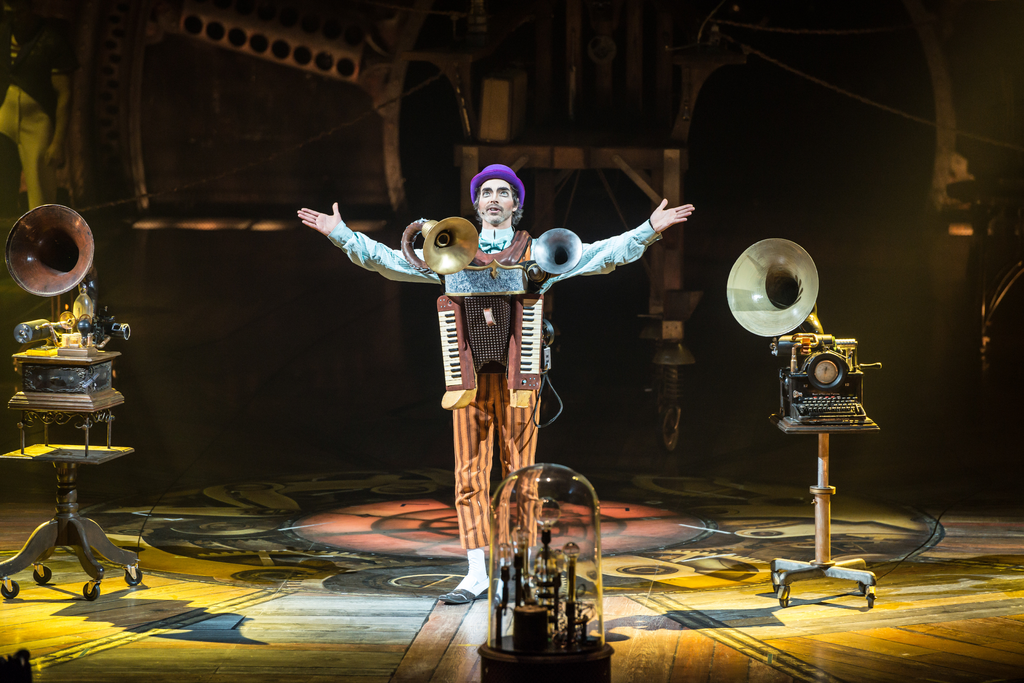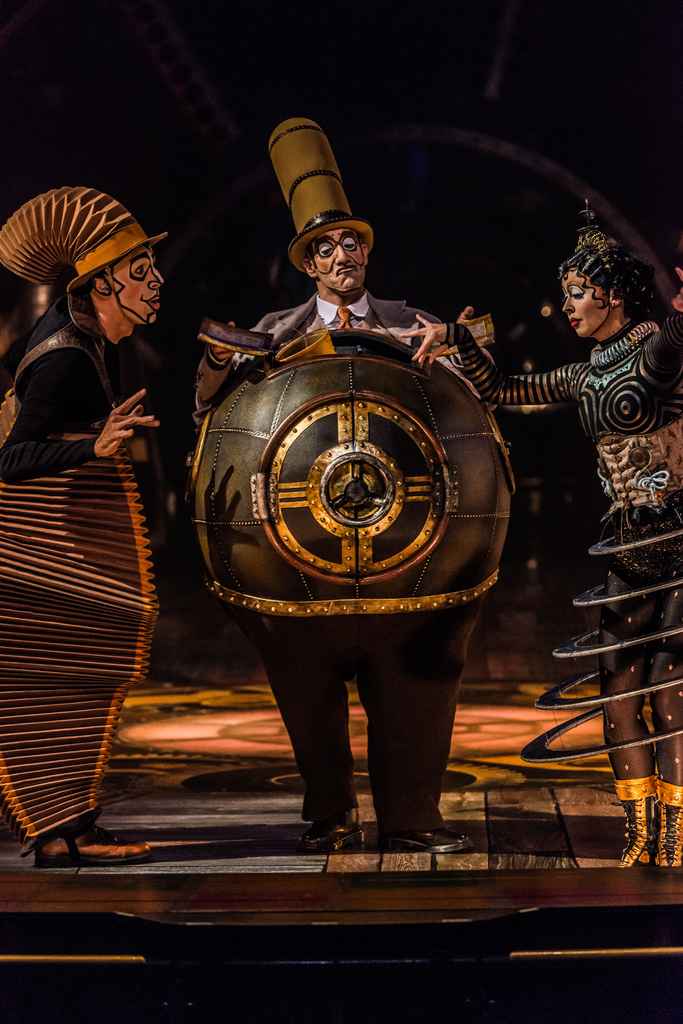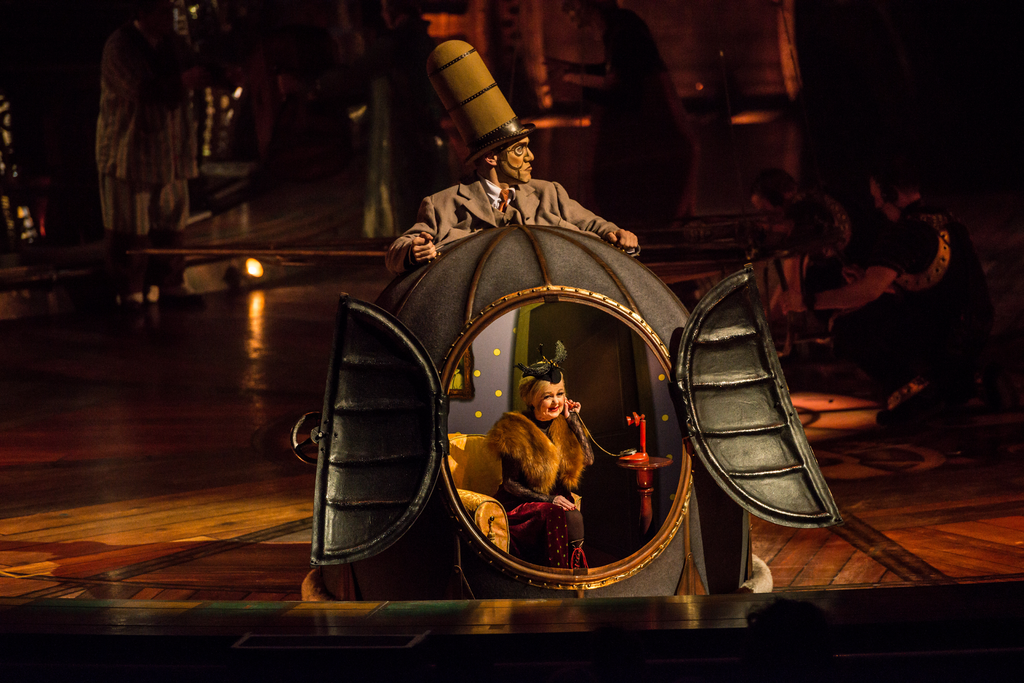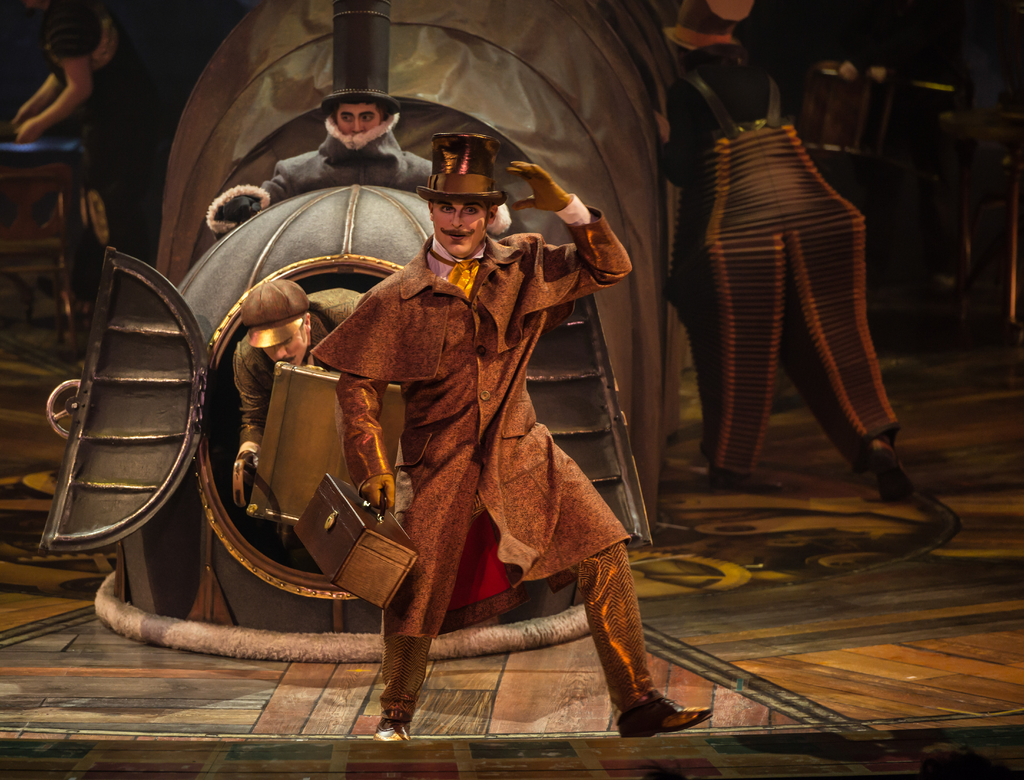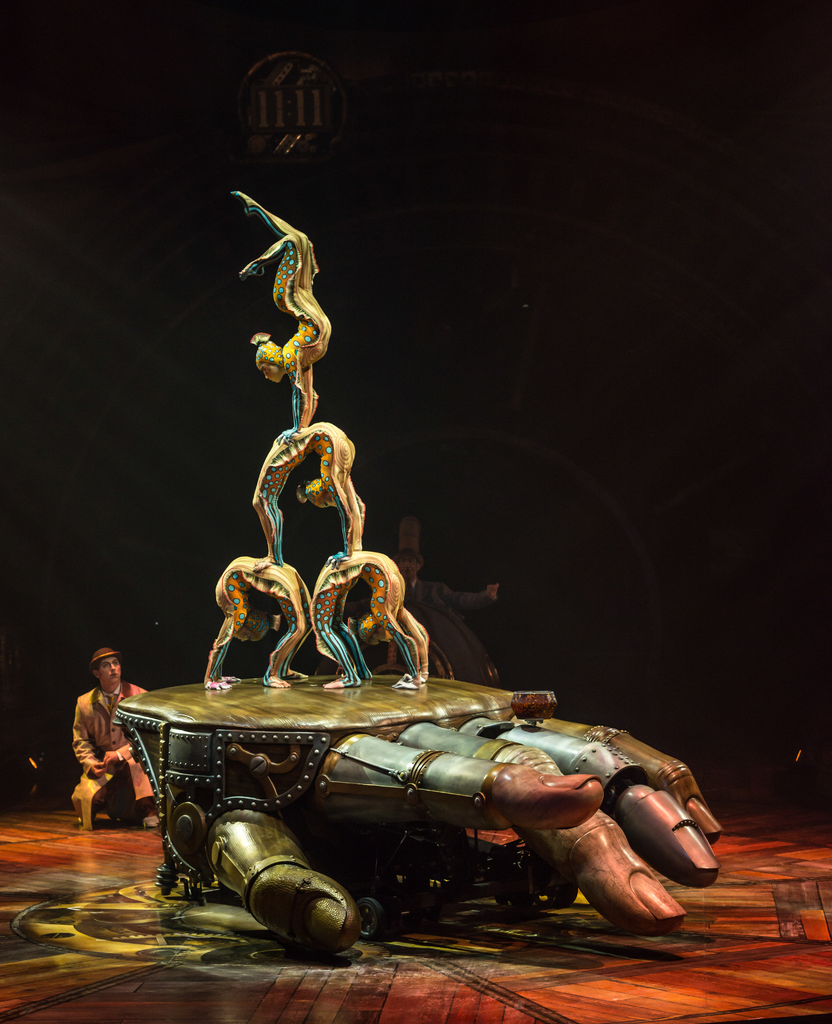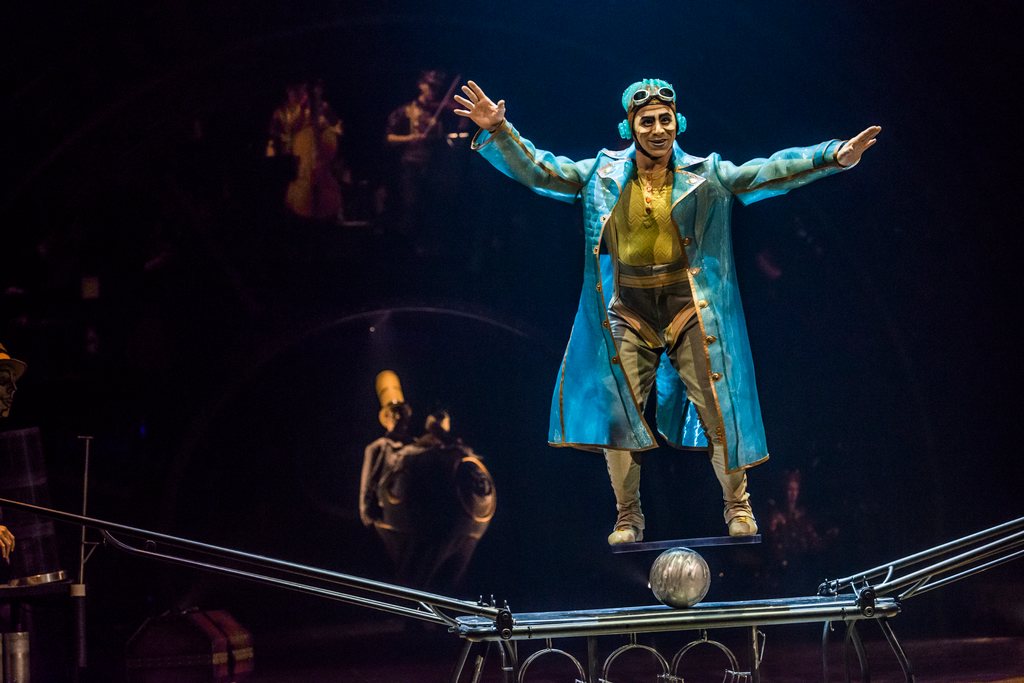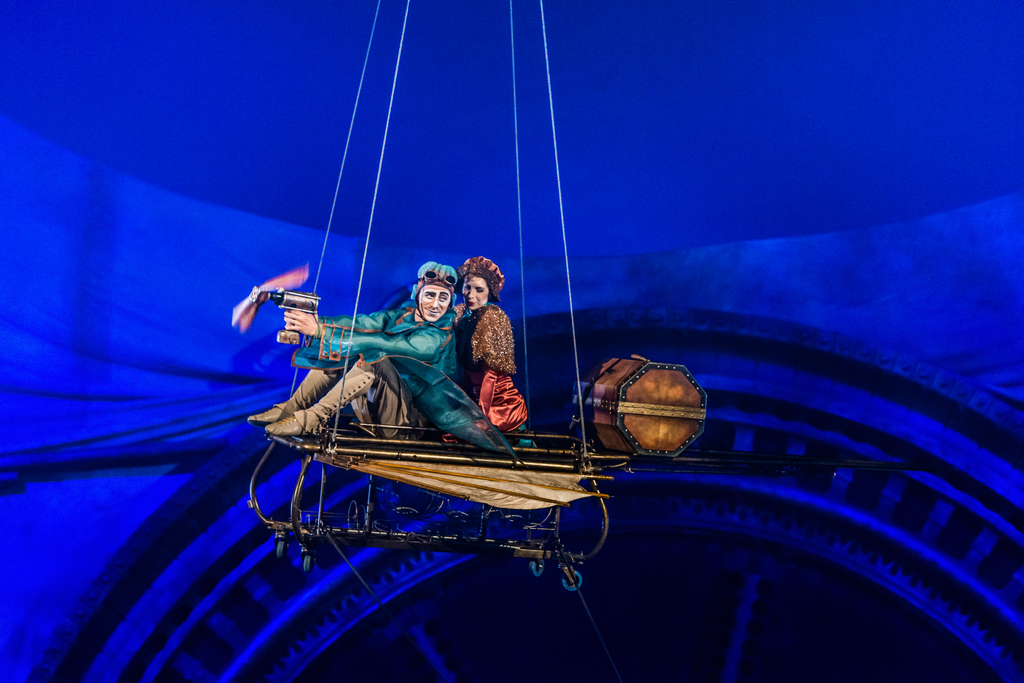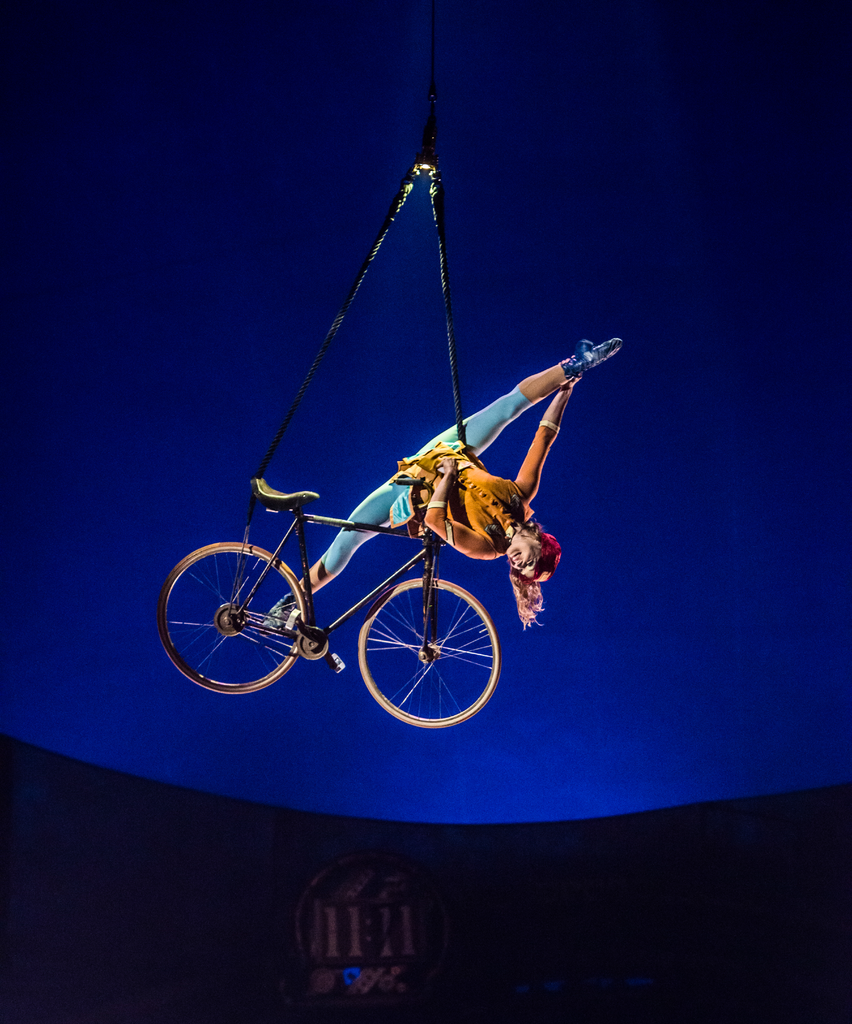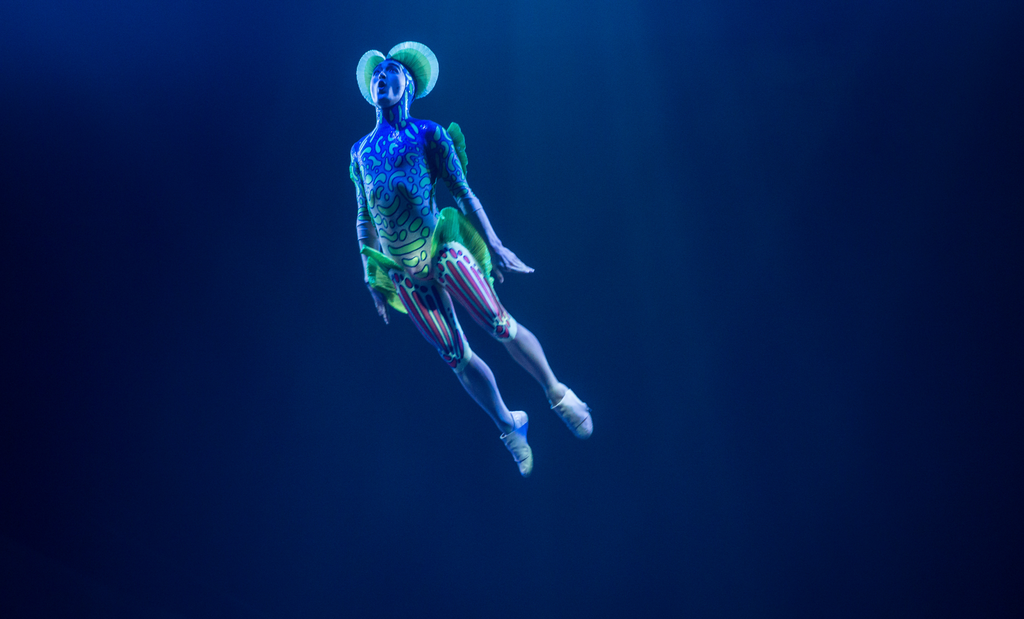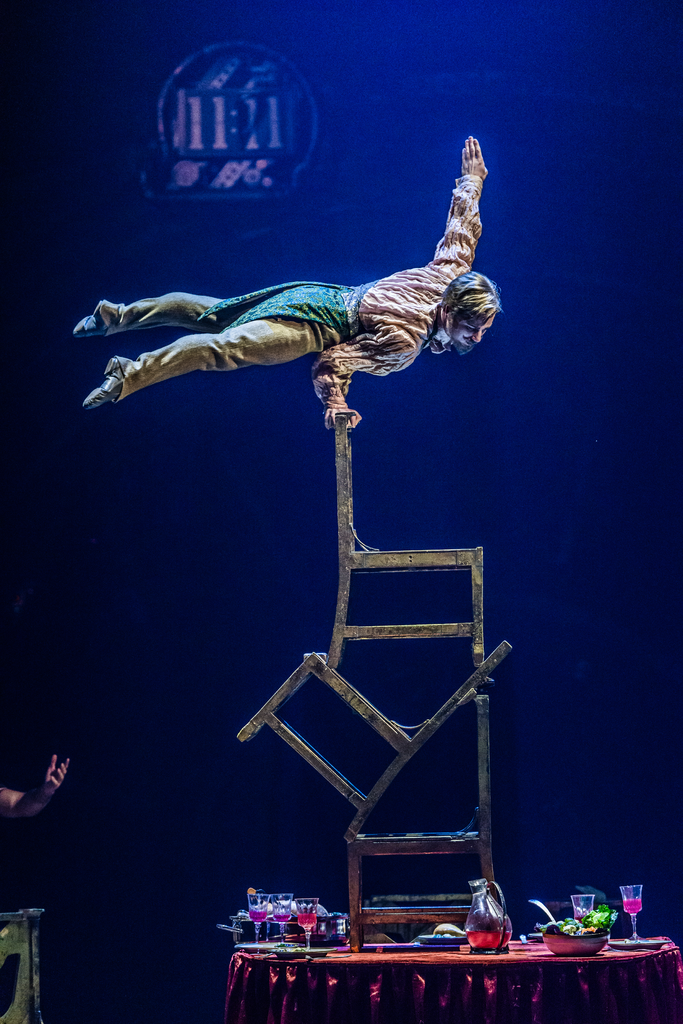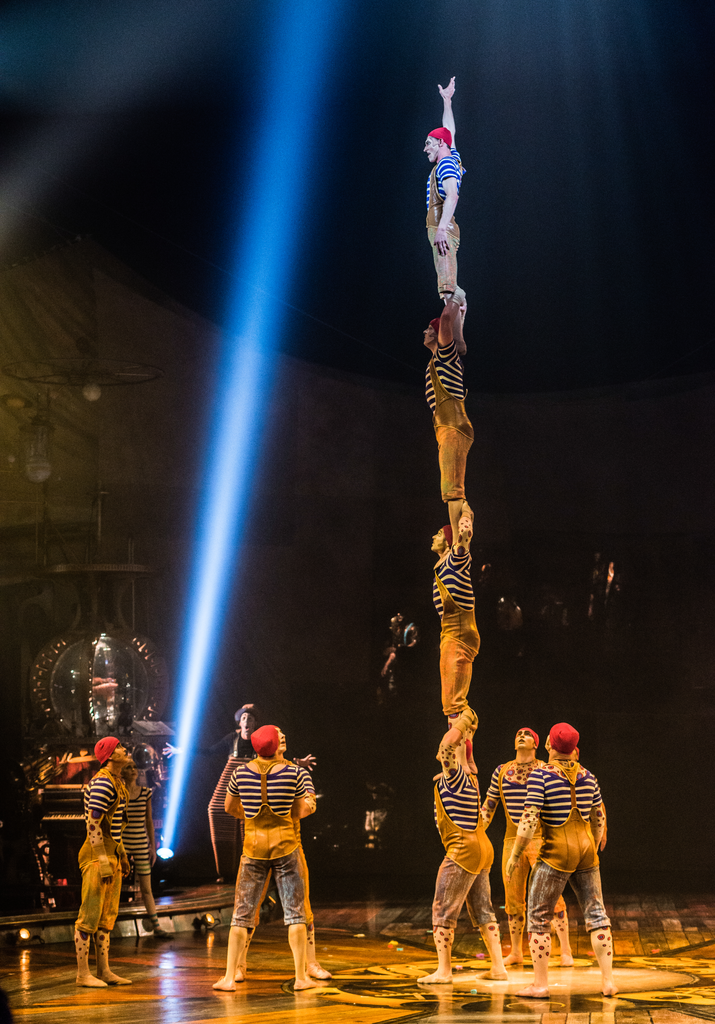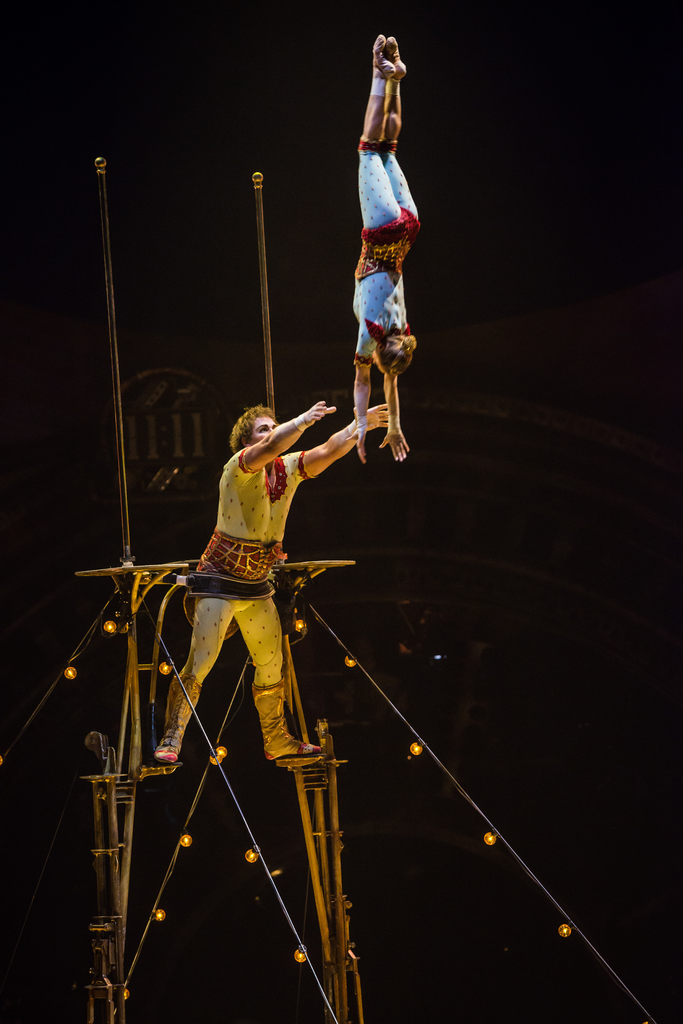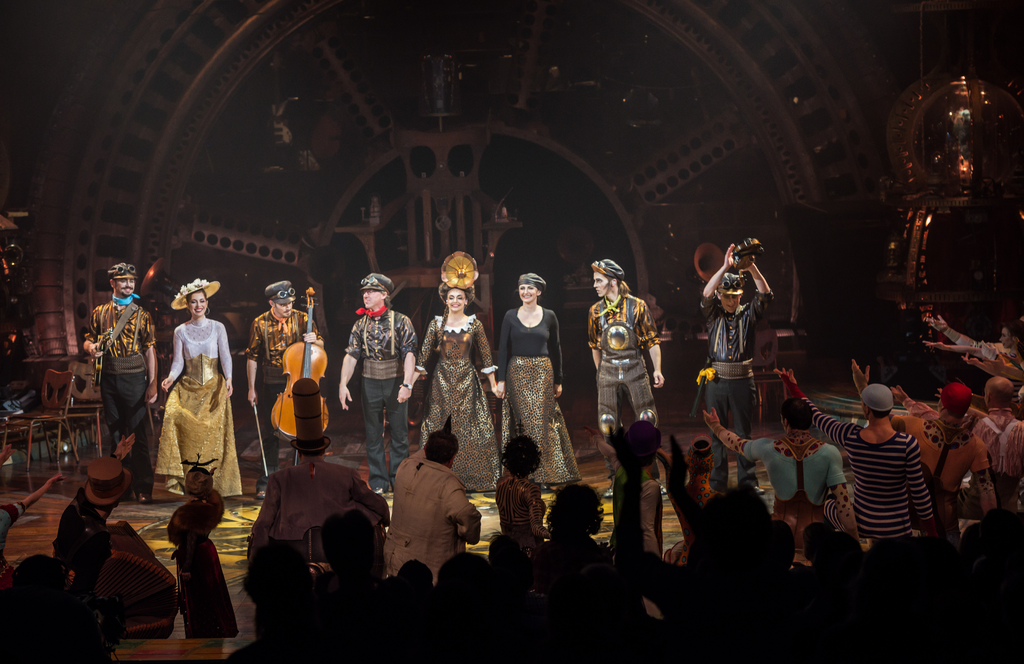People often use the term "circus" to refer to a situation which is frustrating and out of control, but this is far from being an accurate use of the term. Cirque du Soleil is one of the best organized, most profitable, best in class businesses in the world, with over 5,000 employees of 50 nationalities, and 20 shows running in 77 cities and 19 countries around the world.
Within a show like KURIOS, which is running in Tysons Corner, VA, right next to the Silver line Metro stop until September 18th, there are 114 employees from 23 countries, performing for over 2,600 people as many as ten times per week. They have their own chefs, physiotherapists, accountants, and support staff for the 46 performers and musicians.
The world actually turns upside down in this show for a bit, and it's a fantastic journey back in time, or is it into the future? To make it all work, the logistics and technical staff need to not only construct the big tents and get the mini-city set up and maintained, during shows they need to work in the darkness of the backstage, silently, so when the audience tunes in, everything has magically changed and they suddenly find themselves in a new, mysterious environment.
We talked with the General Stage Manager, who has been touring with Cirque du Soleil for almost 14 years, and uses a Brompton bicycle as his go-to transportation and recreation, in whichever city he finds himself in.
Meet Alan Parry:
Q: Welcome to Washington DC! Ok, first the obvious question, when did you get started working in Cirque du Soleil, and what drew you to it?
Thank you! I’d been aware of Cirque du Soleil since the mid 1990’s but finally saw my first live show in 2002. I was blown away of course and left intrigued by the performance and the idea of touring. Then a year later, by a stroke of luck and good fortune, I was presented an opportunity to work on the touring show Dralion. It was really a matter of me being in the right place at the right time. When they asked me if I could follow them to the next city I dropped everything and packed my bags. I literally ran away with the circus.
Q: What kind of skills does it take to do what you do?
Stage managers tend to be organized, methodical, even-tempered, punctual, responsible, and efficient. Some (but maybe not all) of those qualities apply to me. I find my strengths to be in adaptability, in time management and my ability to problem solve, think clearly, and operate in stressful or high-pressure situations. When the show is live I am captain of the ship which is a big responsibility but is also very rewarding. It’s a beautiful thing to orchestrate the many elements of a show and see everyone come together every night to make the ‘magic’ happen. The show is a big puzzle and all the pieces need to work perfectly together to get the result we’re looking for.
Q: How much time do you get to stay in each city you go to? How is the daily life?
Our city runs can be anywhere from six to twelve weeks but average around eight. We have shows six days a week and can perform as many as ten shows during those six days. If that wasn’t enough we also do a lot of training to make sure we’re always running at 100%. Stage managers are there for it all so it’s a lot of hours but we love what we do. You have to.
A life on tour is not for everybody but it can be very fulfilling. Many people have their spouses and children on tour which makes life easier. One thing people might not realize is that the tour never really ends - It’s not like a rock tour where you go away for 25 weeks and then come home. KURIOS will likely tour uninterrupted for the next 15-20 years.
I never imagined this would become my life but now it’s hard to imagine doing anything else.
Q: How does your Brompton bicycle fit into your life? Why a Brompton? Which model and options do you have?
Bicycles were a big part of my life as a child but then left me for many years during adulthood. The idea of having a bicycle on tour came out of necessity really, a desire to get from A to B. I choose not to have a car on tour but still wanted a way to commute to work and explore a city on my day-off. I first purchased a cheap single speed bike which I really enjoyed but it was also impractical in many ways and the lack of gears occasionally made biking impossible. A Brompton turned out to be the perfect solution. I love the flexibility it gives me – I can easily store it in an apartment or hotel room, I can ride to work and then put it under my desk when I get there, I can take it on the metro, into restaurants and to the bank. I can ride all day and then jump in an Uber with it to get home. That freedom was a revelation. I’m also from England so my national pride may have played a part too.
The model I bought is a Black Edition H6L. My height (6’2”) requires a taller seat post so I went with the telescopic option. I also purchased a black Brompton C bag and a hard case from B&W for transport. The circus supports having bicycles on tour by providing bike racks on site and transporting our bikes from city-to-city for us. Now I have wheels whenever and wherever I need them. It’s a great way to explore a city.
Q: Which cities have you worked in, what is your favorite and why?
Too many to mention honestly! It’s been almost fourteen years now and for a number of those years I was touring in arenas doing 40 cities a year. It becomes a bit of a blur at some point. My personal favorites would be Barcelona and Tokyo, they were the first cities on tour that I really fell in love with and thought ‘I could live here’. Tokyo is like nowhere else and that’s really what I like about it. My first hours in the city I felt like I was on the Moon. It’s just a world away from where I am from and everything I knew. It’s an extraordinary place. The places that stay with me are usually places that surprised me or feel far from home, either geographically or culturally. Tel Aviv or Hong Kong would be good examples.
Q: How do you keep the show all together, organized, mistake free?
It just comes down to the hard work of practice and repetition. Performing 360+ shows per year allows you to get very good at what you do and we all take a lot of personal pride in the show.
Q: Why should people come out to see KURIOS?
The creators of this show set out to confound the expectations of the audience and I think they achieved that. The show is a very human show, it has a familiarity that draws you in but then presents you with an unexpected turn. Making the ordinary extraordinary. With that we have an ability to induce awe and surprise in our audience, to transport them to another place for a couple of hours. That’s an increasingly valuable asset these days.
Also, if you like bicycles, we have several on stage. You’ll see bicycles doing things I’m sure you never imagined before.
Q: Where are you off to next?
New York City! Most of my time touring has been outside of the United States so it’s been great to take a show through the major U.S. cities for the first time. I’m very much looking forward to fall weather and Brompton rides in the city.
BicycleSPACE is hosting the Brompton Urban Challenge on September 10th, which is a like a mini-circus which touches each city in which Brompton bicycles are popular, but the performers are participants who go around the city having fun, looking for clues and exploring the city. Local bike advocates WABA will get funding, the participants will be treated to a great time, and each winning team member will win two tickets to see KURIOS, our local Cirque du Soleil show.
Thank you Alan, we're proud to be able to call you a Friend of the Shop.
Erik Kugler.
Photos: Alan Parry and Martin Girard / shootstudio.ca Costumes: Philippe Guillotel© 2014 Cirque du Soleil.


